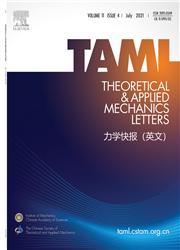This work applies concepts of artificial neural networks to identify the parameters of a mathematical model based on phase fields for damage and fracture. Damage mechanics is the part of the continuum mechanics that models the effects of micro-defect formation using state variables at the macroscopic level. The equations that define the model are derived from fundamental laws of physics and provide important relationships among state variables. Simulations using the model considered in this work produce good qualitative and quantitative results, but many parameters must be adjusted to reproduce certain material behavior. The identification of model parameters is considered by solving an inverse problem that uses pseudo-experimental data to find the best values that fit the data. We apply physics informed neural network and combine some classical estimation methods to identify the material parameters that appear in the damage equation of the model. Our strategy consists of a neural network that acts as an approximating function of the damage evolution with output regularized using the residue of the differential equation. Three stages of optimization seek the best possible values for the neural network and the material parameters. The training alternates between the fitting of only the pseudo-experimental data or the total loss that includes the regularizing terms. We test the robustness of the method to noisy data and its generalization capabilities using a simple physical case for the damage model. This procedure deals better with noisy data in comparison with a more standard PDE-constrained optimization method, and it also provides good approximations of the material parameters and the evolution of damage.


